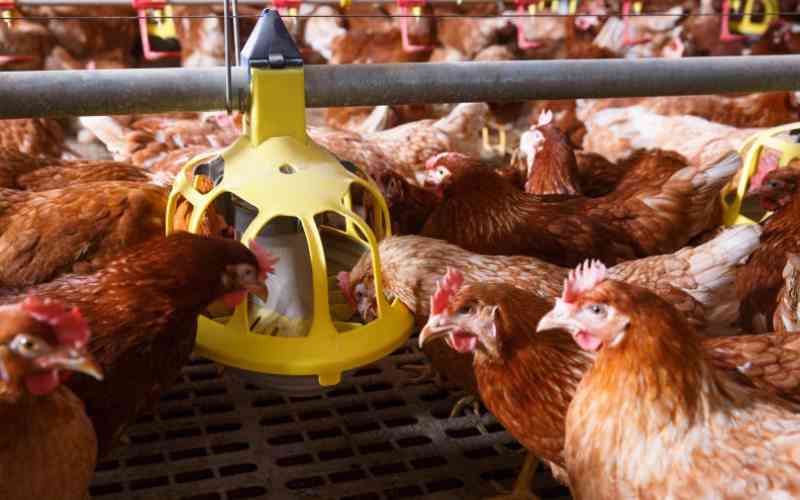
Farm chicken eating from an automatic feeder. [iStockPhoto]
Ever spotted some ugly mouldy stuff on the chicken feed? That is mycotoxin. The word mycotoxin comes from the Greek letter ‘Mykes’ which means ‘Mould’ and ‘Toxicum’ which refers to ‘toxins’, this essentially means toxins produced from moulds or fungus. Mycotoxins are therefore metabolites of natural fungi plants that get into chickens through the feed they eat. The toxins affect all types of poultry species interfering with their health, performance and productivity. Depending on the target organs in the chickens, the toxins can be classified as hepatoxins (affecting liver), nephrotoxins (affecting kidneys), neurotoxins (affecting nerves), dermatoxins (affecting skin). They can also be classified based on their chemical composition, so you will hear names like aflatoxins, fumonisins, zearalenone and ochratoxin. In Africa, the first three are the most common toxins affecting poultry. Aflatoxins in cereals can develop in growing crops where climate is such that it is stressful to the host plant such as high temperature and drought. They more commonly develop post-harvest, during storage period, when the storage conditions are such that the water activity remains above the level to permit fungi/mould growth. This can be due to general climatic conditions, with high ambient temperatures and humidity, or poor ventilation in the storage silos allowing hot spots to develop where water activity builds up.